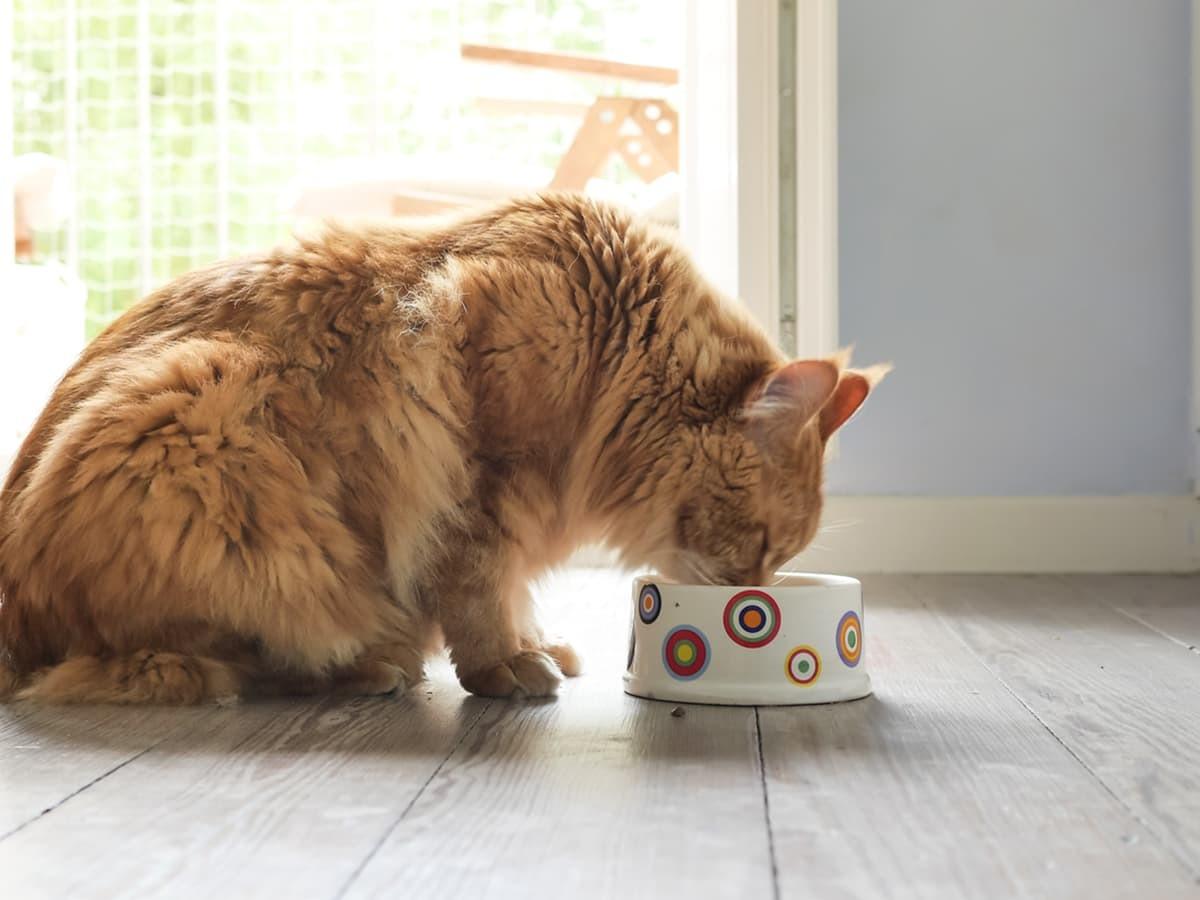Cats can be very picky eaters, so it can be difficult to get your cat to eat their food. Most cats like having a routine and eating similar food every day, but they might also like a bit of variation sometimes. Occasionally, changing something in your cat’s diet can help encourage them to eat.
Cats are obligate carnivores, which means they need to eat meat to get the nutrients they need. Pork is a very popular meat, which, though it’s not always the healthiest, does have some positives for us. Can we share this delicious treat with our cats?
Our cats are a part of our families. Being a good pet parent to a cat can be a tall order, but with a little bit of research, care, and love, you can keep your cat purring.
Let’s discuss the best ways to treat our cats to a little something special and whether or not that snack can be pork.
Is pork safe for cats?
The first factor we need to consider is whether or not pork is safe for your cat to eat. Human food usually falls into one of three categories: safe and healthy, safe but unhealthy, and unsafe. Where does pork fall?
Pork can make a nice treat for your cat, but it’s not the most healthy meat for them either. It’s safe for cats to eat, and it does have some benefits, but there are some downsides to giving your cat pork.
It’s also important to educate yourself on what parts of the pig your cat can eat. There are many cuts of pork, some of which can pose a threat to your kitty’s well-being.
Before you give your cat pork, you must prepare it correctly. Cats should never eat raw pork, nor should they eat pork covered in spices or sauces. While people may love the occasional spicy pork hot link, this is one snack we should never spit with our feline friends.
We wish that figuring out which foods were safe for cats would be a simple yes or no question, but unfortunately, that’s not usually the case.
Does it have any health benefits?
Although your cat’s food usually has all the nutrients that your kitty might need, we want to ensure that the treats we give them are healthy for them as well.
What are the health benefits that pork has for our cats?
Proteins, specifically those found in meat, are a necessary part of your cat’s diet. Pork contains a lot of protein, so it is good for cats in moderation. However, other meats also have a lot of protein. What other perks does pork have?
Pork also contains taurine, which is an amino acid. Taurine helps your cat’s vision and heart to function properly. It also aids the immune system and digestive system and can help your cat during pregnancy.
Pork also contains many other necessary vitamins and minerals that can promote your cat’s health, like:
Potassium
B vitamins
Zinc
Phosphorus
Niacin
Pork also has some water in it, which can help your cat keep hydrated, although it can’t replace the water they would get from their bowl or pet fountain.
Are there any parts of the pork that I shouldn’t give my cat?
There are many different cuts of pig meat that can be classified as pork. There’s pork belly, loin chops, bacon, loin roast, pork shoulder, and pork tenderloin, among others. All these cuts are delicious when cooked correctly, but not all of them are good for your cat.
In general, pork has a lot of fat, but some cuts have more fat than others. Lean cuts (cuts with less fat) are healthier. Too much fat in the diet can potentially lead to health problems, like clogged arteries.
When prepping your cat a snack, you should avoid cuts like pork shoulder, bacon, and pork belly. Cuts like loin roast, loin chops, and tenderloin, while not the best, are superior to possible alternatives.
You should also avoid smoked pork since it has high concentrations of preservatives, salt, and chemicals that can harm your cat.
Are there any dangers in giving my cat pork?
Although pork has some perks, there are also some dangers as well. As we’ve mentioned, one of them is the high-fat content. Cats usually do better on leaner diets, especially since some breeds prefer lounging to prowling.
Pork is also very salty. It has a high sodium content, which can negatively impact your cat. Too much salt in your cat’s diet can possibly lead to sodium poisoning or hyponatremia. It can also damage organs, like the kidneys. An excess of sodium puts our pets (and us) at risk of dehydration.
It’s also possible for your cat to be allergic to pork. The first few times you give your cat pork, you should give them only a little bit and watch for their reaction. If you notice any rashes, difficulty breathing, vomiting, or diarrhea, stop feeding your pet and take them to the vet. Your cat might be allergic or this adverse reaction could point to another problem.
Besides the high-fat content and potential risk for sodium poisoning, another concern lies in how the pork was prepared.
Pork bones present a choking hazard, and they can also cause internal damage. They tend to be very brittle and break easily, and the shards can harm your cat. It’s best to remove any bones before feeding your cat pork. Cats and dogs of any size should never be given bones to chew on.
Raw pork is dangerous for both cats and people; it must be cooked before it goes on a plate (or cat bowl). Raw pork can have bacteria and parasites, which can make your cat sick. These potential dangers include salmonella, toxoplasmosis, hepatitis E, and campylobacter.
When making pork for your cat, check that it’s cooked thoroughly. Your cat could get trichinellosis if pork isn’t cooked to a certain temperature.
What is trichinellosis?
Trichinellosis is a condition caused by a parasitic worm called trichinella spiralis. These worms can live in raw pork, and when they are eaten, they will make a home in your cat.
These worms form cysts in your cat’s muscles while in the larval stage. After they become adults, they can move into your cat’s intestines, causing significant pain.
The symptoms of trichinellosis include:
Hypersalivation (a lot of saliva or drool)
Weakness
Lethargy
Weight loss
Bloody stool
Diarrhea
Sometimes your cat may not present symptoms, but if you think that your cat may have had some raw pork, you should probably take them to the vet.
How often should I give my cat pork?
Unfortunately, giving your cat pork daily is not a good idea, even if you’re only limiting it to a little nibble. Pork is better served once or twice a week. This meat can also help kitties work up an appetite if they are refusing to eat.
However, you don’t want your cat to get too used to pork in their diet, so make sure you have plenty of other delicious treats for them to try, like shrimp or tuna.
Keeping your cat healthy and happy
Making sure your cat has a well-balanced, tasty diet can be difficult, especially when you have a picky eater. Providing occasional treats, like pork, can help encourage your cat to eat. It’s like having ice cream for dinner, except much healthier.
Pork does have a few nutritional benefits for our cats. It contains a host of essential nutrients for cats, like protein, taurine, and various vitamins and minerals. It can help support the immune system and strengthen your cat’s vision.
However, pork has some downsides too. It’s high in fat and sodium, leading to many health issues. It’s also essential to make sure that you pick the right type of pork since some cuts have a higher fat content than others.
If your cat eats undercooked or raw pork, there’s also the possibility that they could get an infection or a parasite like the trichinella spiralis worm.
Even with these potential dangers, as long as you prepare the pork properly and limit how often your cat can have it, pork can be a delicious treat that your cat will love. A healthy cat makes a happy cat, and with a good diet, you and your cat can live a long and happy life together.

The resident animal enthusiast at Spot. I have a lifetime of pet parent experience. If it has fur, feathers, or scales, I’ve probably shared my home with it. I aim to be a reliable source, blending experience with a dedication to the well-being of pets.
*Jan 2019 to Aug 2024 Spot Pet Insurance Services, LLC claims data.
"Can Cats Eat Pork?" Purina, 28 Jul. 2025, https://www.purina.com/articles/cat/feeding/can-cats-eat/pork.
Koschalk, Katie. "Can Cats Eat Pork?" Chewy, 30 Apr. 2025, https://www.chewy.com/education/cat/food-and-nutrition/can-cats-eat-pork.
"Pork Allergy in Cats," Wag, n.d., https://wagwalking.com/cat/condition/pork-allergy.
The information presented in this article is for educational and informational purposes only and does not constitute or substitute for the advice of your veterinarian.












